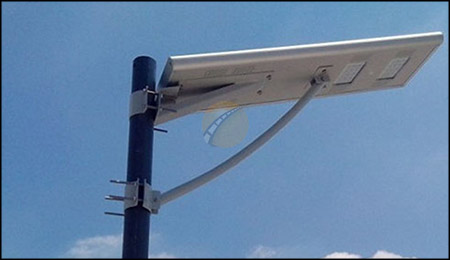Navigating Tomorrow: The Rise of Smart Zebra Crossings
Jan 05, 2024
Introduction In the ever-evolving landscape of urban mobility, traditional zebra crossings are getting a futuristic makeover with the advent of Smart Zebra Crossings. These cutting-edge pedestrian pathways are revolutionizing the way we approach road safety and traffic management. As technology becomes an integral part of our daily lives, these smart crossings are poised to enhance pedestrian safety, streamline traffic flow, and contribute to the creation of intelligent urban environments.
The Anatomy of Smart Zebra Crossings Smart Zebra Crossings go beyond the conventional white-striped paths on the road. Equipped with an array of sensors, cameras, and connected infrastructure, these crossings are designed to dynamically respond to the surrounding traffic conditions. Advanced computer vision systems analyze pedestrian movement, while real-time data is processed to adapt crossing signals, ensuring a seamless and safe journey for pedestrians.
 Enhanced Safety Features One of the primary advantages of Smart Zebra Crossings is the heightened safety features they offer. Equipped with sensors that detect approaching vehicles, these crossings can dynamically adjust signal timings, providing pedestrians with extended crossing times when needed. LED lighting integrated into the crossing itself enhances visibility, especially during low-light conditions, further reducing the risk of accidents and enhancing overall road safety.
Enhanced Safety Features One of the primary advantages of Smart Zebra Crossings is the heightened safety features they offer. Equipped with sensors that detect approaching vehicles, these crossings can dynamically adjust signal timings, providing pedestrians with extended crossing times when needed. LED lighting integrated into the crossing itself enhances visibility, especially during low-light conditions, further reducing the risk of accidents and enhancing overall road safety.
Connectivity and Integration Smart Zebra Crossings are not isolated entities; they thrive in connectivity. These crossings seamlessly integrate with smart city infrastructure, communicating with traffic lights, nearby vehicles, and even pedestrians' smartphones. This interconnectedness fosters a synchronized traffic management system, minimizing congestion and improving overall urban mobility. Accessibility and Inclusivity Beyond safety and connectivity, Smart Zebra Crossings prioritize accessibility for all. Equipped with features such as tactile paving and audible signals, these crossings cater to individuals with visual or auditory impairments, ensuring that urban spaces become more inclusive and accommodating for everyone.
Accessibility and Inclusivity Beyond safety and connectivity, Smart Zebra Crossings prioritize accessibility for all. Equipped with features such as tactile paving and audible signals, these crossings cater to individuals with visual or auditory impairments, ensuring that urban spaces become more inclusive and accommodating for everyone.
Sustainable Urban Mobility The integration of Smart Zebra Crossings aligns with the broader goals of sustainable urban mobility. By optimizing traffic flow, reducing waiting times, and enhancing safety, these crossings contribute to a more efficient transportation ecosystem. The resulting reduction in traffic congestion not only improves the overall quality of life for city dwellers but also aligns with global efforts to create environmentally conscious and sustainable urban areas. Conclusion: Paving the Way to Intelligent Urban Spaces As Smart Zebra Crossings take center stage in the evolution of urban infrastructure, they represent a pivotal step towards intelligent and people-centric cities. By leveraging the power of technology to enhance safety, connectivity, and accessibility, these crossings embody a future where our urban spaces are not just smart but also compassionate. Navigating tomorrow's cities will be safer, more efficient, and inclusive, thanks to the transformative impact of Smart Zebra Crossings.
Conclusion: Paving the Way to Intelligent Urban Spaces As Smart Zebra Crossings take center stage in the evolution of urban infrastructure, they represent a pivotal step towards intelligent and people-centric cities. By leveraging the power of technology to enhance safety, connectivity, and accessibility, these crossings embody a future where our urban spaces are not just smart but also compassionate. Navigating tomorrow's cities will be safer, more efficient, and inclusive, thanks to the transformative impact of Smart Zebra Crossings.

Connectivity and Integration Smart Zebra Crossings are not isolated entities; they thrive in connectivity. These crossings seamlessly integrate with smart city infrastructure, communicating with traffic lights, nearby vehicles, and even pedestrians' smartphones. This interconnectedness fosters a synchronized traffic management system, minimizing congestion and improving overall urban mobility.

Sustainable Urban Mobility The integration of Smart Zebra Crossings aligns with the broader goals of sustainable urban mobility. By optimizing traffic flow, reducing waiting times, and enhancing safety, these crossings contribute to a more efficient transportation ecosystem. The resulting reduction in traffic congestion not only improves the overall quality of life for city dwellers but also aligns with global efforts to create environmentally conscious and sustainable urban areas.





